In 2025, the landscape design world will embrace two contrasting yet complementary trends: minimalism and maximalism. Both styles redefine how commercial outdoor spaces are created, allowing businesses to express brand identity through innovative, sustainable, and functional environments. This evolution isn’t just aesthetic and reflects a growing focus on eco-friendly and efficient design principles.
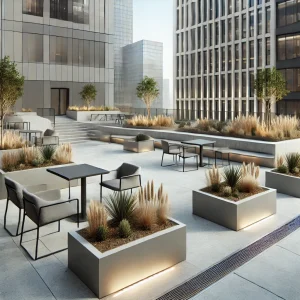
A Look Back: Shifts in Landscaping Trends
To understand how minimalism and maximalism will shape the future, it’s essential to look at the trends of the past few years. Since the early 2020s, sustainability and functionality have driven landscaping design, with a significant push toward green technology, native plants, and reduced water use. Minimalist approaches gained popularity, emphasizing simplicity, clean lines, and low-maintenance materials that create peaceful environments. At the same time, maximalism gained momentum, championing bold, vibrant, and eclectic spaces that engage all the senses.
In 2025, these two philosophies will converge, giving rise to outdoor spaces ranging from serene oases to expressive, immersive landscapes.
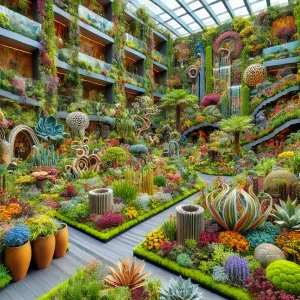
Minimalism: Less Is More
Minimalism in landscaping revolves around the concept of “less is more.” In commercial settings, such as corporate offices or urban hotels, minimalist designs create an atmosphere of calm and order, appealing to visitors seeking respite amid busy city life. These spaces often feature simple materials like concrete, gravel, and metal, paired with sustainable elements such as drought-tolerant plants and native grasses.
For businesses in British Columbia, minimalist commercial landscaping offers the added advantage of sustainability. Features like green walls, solar lighting, and automated irrigation systems reduce environmental impact while maintaining a modern aesthetic. Companies like IslandEarth Landscape Company showcase these designs in urban spaces across Victoria, utilizing native plant species and water-wise technology to create low-maintenance, eco-friendly environments.
A prime example is minimalist rooftop gardens, where sleek, functional seating areas blend with carefully selected plantings that require minimal care. Such designs help businesses reduce operational costs while contributing to their brand’s green credentials.
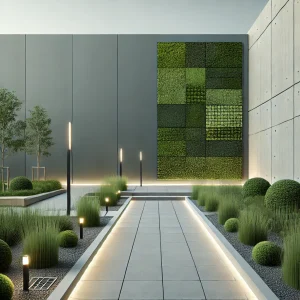
Maximalism: Bold and Immersive
On the other end, maximalism makes a bold statement. This trend embraces abundant textures, colors, and plant varieties, creating a vibrant and immersive experience for those engaging with the space. For industries like hospitality, which thrive on creating memorable environments, maximalism allows businesses to craft lush gardens that captivate visitors and provide a sense of escape.
In British Columbia’s commercial spaces, maximalist landscaping appears in many forms, from multi-layered planting schemes to bold artistic installations. Imagine a corporate campus where winding pathways lead through diverse flowering plants, sculptures, and water features, creating a sensory journey that stimulates creativity and relaxation.
IslandEarth Landscape Company leads the way with its bold approach to maximalist designs. It incorporates native species alongside artistic garden features to craft environments that feel extravagant and connected to nature. These designs reflect a commitment to sustainability while embracing nature’s wild and untamed beauty.
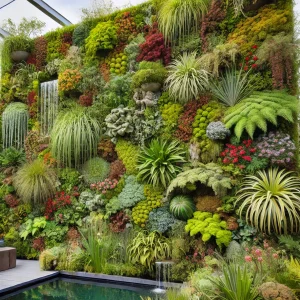
The Intersection of Sustainability and Design
Whether businesses choose a minimalist or maximalist approach, sustainability remains a common thread running through both trends in 2025. Green walls, for instance, feature in both styles: in minimalist spaces, they remain sleek and uniform, while in maximalist designs, they become layered with various plants to create a living tapestry.
Technological innovations like smart lighting systems and automated irrigation ensure that these commercial spaces are beautiful and eco-conscious. Integrating solar-powered garden lights and water-wise irrigation systems allows commercial properties to balance bold design with sustainable practices, furthering their environmental commitment.
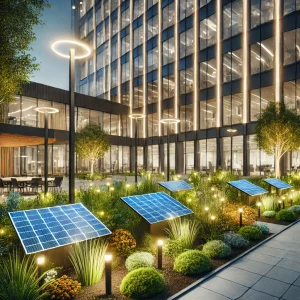
Challenges and Solutions for Commercial Spaces
While both trends offer exciting possibilities, commercial spaces may face challenges when implementing these styles. Minimalist landscapes, though low-maintenance, can sometimes seem stark or uninviting if not designed with care. On the other hand, maximalist landscapes can be difficult to maintain due to their complexity.
However, these challenges are mitigated through smart design and innovative solutions. For minimalist designs, incorporating native plants that thrive in local conditions ensures that the landscape remains vibrant year-round without excessive intervention. Meanwhile, automated systems, such as robotic lawnmowers and self-watering planters, help maintain maximalist gardens, reducing the labor required to keep them lush and dynamic.
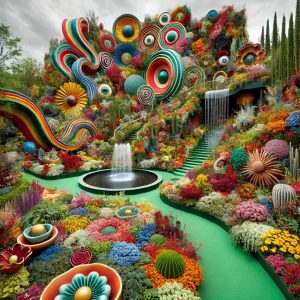
Looking Ahead: Shaping Future Landscapes
As 2025 approaches, the evolution of outdoor spaces will be defined by the growing adoption of minimalism and maximalism in commercial settings. Businesses in British Columbia are particularly well-positioned to leverage these trends, with companies like IslandEarth Landscape Company leading the way in sustainable, innovative design.
Whether through the serene simplicity of minimalist spaces or the bold, immersive experience of maximalist landscapes, the future of commercial outdoor design promises to be as diverse and dynamic as the businesses that inhabit these spaces.
Incorporating these trends offers not only aesthetic appeal but also the opportunity to create environments that resonate with visitors, clients, and employees—shaping how people interact with the world around them for years to come.